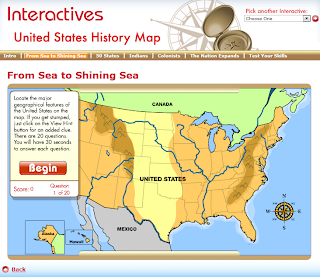I have been on a major reading kick lately. I am a reader, and always have been, but sometimes life gets in the way of getting a lot of reading for myself done. However, I have been enjoying the new year by doing a lot of reading just for me!

I nearly always choose books that are written for late elementary/middle school. I started teaching as a middle school language arts teacher, so that is when I became a fan. I can read great stories at this level, and it doesn't take me too long to get through a book.

I began this most recent spurt of reading with
Stargirl by Jerry Spinelli. This is certainly not a new book, just one I hadn't gotten around to reading. I enjoyed it, and I loved the message that it sent. It reminded me a lot of
Loser by Jerry Spinelli. (one of my students' favorite read alouds) However, I don't think this book would be one my students would enjoy yet. While the text has nothing provocative or wrong in it, I just don't think they would be able to connect with the characters who are both in high school. I think this book would be a great one for middle school though.
I then moved into
The Report Card by Andrew Clements. I enjoyed this one as well. I liked the message, amd I have always enjoyed this author's voice. I could see many of my students enjoying this one.
The next thing I knew, I was wrapped up in The Secrets of the Immortal Nicholas Flamel. This 5 (soon to be 6) book series is one that has taken my classroom by storm. I have had the first three books in my library for a couple of years, but I finally picked it up to start in January.

As I began the first in the series,
The Alchemyst, I knew that my group of voracious readers would LOVE this series. They had enjoyed reading Harry Potter and Percy Jackson, and in some ways, this series is a marriage of these two ideas. Readers get to enjoy the magic of Harry Potter, but they also get to learn about mythology as they did in Percy Jackson.
For mythology, this book covers most cultures' mythology. It makes it interesting to imagine all of the different gods interacting with each other.

Of course, I knew my kiddos would love the action, and all of the books n this series offer plenty of this. I was pushed to read the books quickly so that I could get them to a boy in the classroom reading it. The next thing I knew, students were checking books out from the library and purchasing copies from bookstores. They have found out that the final book in the series comes out in May, so I will have to get it so we can end our year with this book.

When I finished
The Warlock, I kind of floundered for a couple of days trying to find what I was going to read next. I was in the mood for more action and excitement, but I didn't put my fingers on anything right away.
While cleaning recently, I came across
Waiting for Normal by Leslie Connor. This was certainly a change from the Nicholas Flamel world that had overtaken my reading. But it was a good one to read and to take me back to why I fell in love with adolescent literature.

This story is about a young girl whose life is in constant turmoil because of a mother who is not too great at that job. She is a strong character who is forced to grow up quickly, and we understand her point of view and her love of other characters in the book quite clearly. This book reminded me of many of the Sharon Creech books I have read over the years. It is not one that I would recommend to my 3rd graders, because I don't think that they would understand the character and her issues yet.
The next two I am going to give a go are
Fablehaven by Brandon Mull and, in an effort to find something appealing to my more reluctant readers,
Dragonbreath: The Curse of the Wereweiner by Ursula Vernon.
![Waiting for Normal [Book] Waiting for Normal [Book]](https://lh3.googleusercontent.com/blogger_img_proxy/AEn0k_uWFOivYK5xR0sdIXoX8zBL8gvIvpq_VSI0iq9xS7cIziAJZmWLPNnUos9rE0_iuCivWd8PXaGJH7sUwa6fhb0hS1HO0IK8GSbzNVKnymo9sSTgpZoYAa5UJgvZ2AuUS54yxj0iSZubEMB30NKIjhYGNSmZ67ht4w=s0-d) Fablehaven
Fablehaven especially looks interesting to me, and one of my sons has read them all and recommended them to me. The Curse of the Wereweiner also comes from my sons' library, but it looks as though it has not been read yet. What about you?
Do you find yourself reading children's books a lot, too? Do you have any special ones that you recommend for me or my voracious 3rd graders? It makes my workshop and my conferences much stronger when I can talk books with my students and know exactly what they are talking about in the books they are reading!
Besides that, it makes it a lot easier for me to talk the talk to my kids about the importance of reading when they know I walk the walk!































